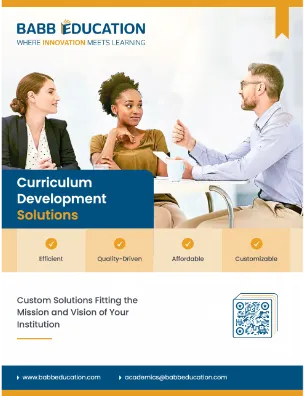In traditional learning environments, students typically receive direct instruction during class time and complete assignments independently afterward. The flipped classroom reverses this process—students engage with instructional content before class (usually through videos, readings, and/ or interactive learning activities), and class time is dedicated to discussion, problem-solving, and concept application.
In online education, where students often lack face-to-face interactions, implementing a flipped model can bridge gaps in engagement and active learning. Read on to explore how our instructional designers work with clients to implement a flipped classroom leveraging technology and pedagogical strategies to enhance the learning experience and maximize student success.
Benefits of the Flipped Classroom in Online Education
Students in online courses often struggle with passive learning, merely consuming content without deep engagement. The flipped model addresses this challenge by requiring students to interact with materials beforehand, fostering richer discussions and applied learning during synchronous or collaborative activities. By shifting lectures to pre-class content and using class time for interactive discussions, educators can create more engaging experiences promoting deeper student interaction, collaboration, and critical thinking—essential elements for combating disengagement in online learning environments. Flipped classrooms also allow students to learn at their own pace.
Recently, Babb Education collaborated with a mid-sized university to redesign an online Introduction to Programming course using the flipped classroom model. The original course relied heavily on passive video lectures, and student engagement was low. To enhance interaction, we helped faculty to develop short, digestible instructional videos, coding exercises, and self-paced quizzes for students to complete before class. Synchronous sessions were then transformed into live coding workshops, problem-solving discussions, and peer-to-peer debugging sessions.
The flipped classroom model offers additional benefits that enhance student learning and engagement. Pre-class materials can be accessed and reviewed multiple times, allowing students to learn at their own pace and reinforcing key concepts as needed. This flexibility is particularly valuable in online education, where students come from diverse backgrounds and may require varying levels of support.
The flipped approach also encourages students to take ownership of their learning. By engaging with course materials before class, they develop essential skills such as self-discipline, time management, and independent study habits—critical competencies for success in an online learning environment.
Key Steps for Implementing a Flipped Classroom Model in Online Education
Here are a few examples of what our instructional designers do when building a flipped classroom.
- Define Learning Objectives Clearly - Before designing a flipped online course, instructional designers and educators must identify clear learning objectives. Using Bloom’s Taxonomy helps structure objectives that go beyond rote memorization, fostering higher-order thinking skills such as analysis, synthesis, and application. For example, before class, students might watch a video on cognitive load theory, and during class, they apply the theory by designing an e-learning module that incorporates cognitive load principles.
- Design High-Quality and Engaging Pre-Class Content - Pre-class materials serve as the foundation of the flipped model. In an online setting, these materials must be engaging, interactive, and accessible. Some of these materials include brief video lectures to clarify particularly difficult concepts, scholarly articles, case studies, and interactive multimedia learning activities.
- Design High-Quality and Engaging In-Class (Synchronous) Activities - The next step is to create meaningful synchronous interactions. Effective online flipped classroom activities can include students applying concepts to real-world scenarios to solve problems, collaborative projects such as discussions and debates, or peer teaching for which students explain concepts to their peers, reinforcing their understanding.
- Integrate Asynchronous Discussion and Reflection - Beyond synchronous sessions, asynchronous components help students reflect and extend learning. Some strategies we use include adding discussion boards, reflective journals or blogs, and peer review and feedback. In one leadership course we designed, students posted their leadership self-assessments and then provided constructive feedback to their peers based on leadership theories discussed in the pre-class material.
- Implement Various Assessments - When assessing students in a flipped online course faculty measure both knowledge acquisition and application through formative assessments (e.g. quizzes, concept maps, or quick polls before synchronous sessions), summative assessments (e.g. projects, case studies, or problem-solving tasks), and self and peer assessments.
Using a flipped classroom model in online education can enhance student engagement, promote active learning, and foster deeper understanding of concepts. By carefully designing pre-class materials, facilitating engaging synchronous activities, and having the right assessment plan, educators can create a more interactive and effective learning experience.
As online education continues to evolve, the flipped classroom remains a powerful approach to making learning more student-centered and dynamic. If you are ready to flip your classroom, contact Babb Education today!
By leveraging the flipped classroom approach, universities can create more dynamic and effective online learning environments. Babb Education specializes in helping institutions transition to this model, ensuring both faculty and students reap the benefits of more interactive and engaging online courses.



